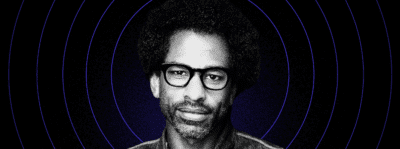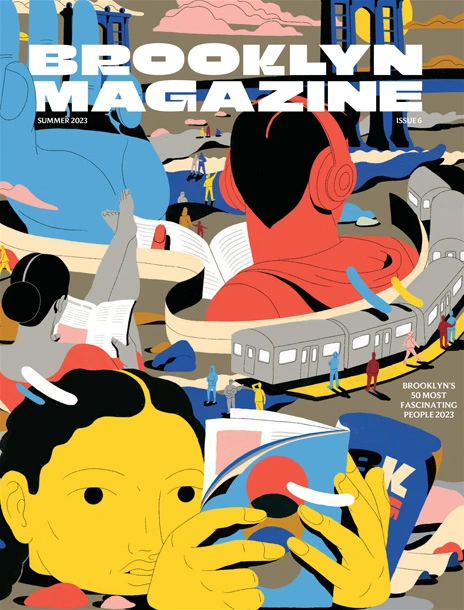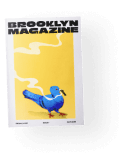What Does Fair Use Mean?: Talking with Pop Culture Pirate Elisa Kreisinger


Video remix artist Elisa Kreisinger doesn’t wait for someone to write her a storyline that she wants to watch. She’s a self-proclaimed “pop culture pirate” with a sharp eye and knows how to mash up her own subversive plots: Don Draper can carry out an affair with Roger Sterling and Carrie Bradshaw can have a crush on Natasha Naginsky instead of Mr. Big. Kreisinger, however, isn’t doing anything illegal.
Her clever videos have repeatedly gone viral only to be erroneously flagged or removed by YouTube based on allegations of copyright violations. Kreisinger has fought back and won each time, but it’s not an easy path to follow. “Every few weeks, you are constantly having to defend your work,” she says. “You thought you were clear two weeks ago, and now you’ve got to defend it again because someone else is saying that they own a portion of your work.”
Her transformative videos—which highlight wealthy GOP candidates bragging about their tough childhoods; red carpet starlets answering questions about their dresses; and, Jay-Z turning his Picasso Baby art performance into a lighthearted party—are ultimately protected by the doctrine of Fair Use, which allows people to re-purpose excerpts of copyrighted material without the permission of the copyright holder, so long as that material is being used for commentary, criticism, or parody.
“Even three or four years ago, people wouldn’t have known what Fair Use is,” Kreisinger says. “Now Fair Use is in the news and, thankfully, there are large artists like Richard Prince whose court cases are leading the way for conversations about this.”
And, the remix community has also steadily grown. “It used to be that participation was super low because you had to wait for the DVD box set to come out, and you’d rip the DVDs, and bring them into Final Cut and edit them,” she says. “Now you can access content so much easier, which is wonderful and lowers the barrier to participation.”
Kreisinger has also noticed a change in the way that we watch television, with large groups of people moving away from just being “pure content consumers” to becoming content producers: live tweeting during TV shows, blogging about their favorite series, uploading videos, or making a mash up.
“There’s that line for active participation that is so low that there are hardly any passive consumers,” Kreisinger explains. “There’s more active media makers and producers.” Now, she adds, “you are able to have a different or a more critical conversation in that space that you wouldn’t alone on a couch. The opportunity at least is there.”
Still, and most surprisingly, “the greatest threat to Fair Users is self-censorship.” says Kreisinger. “Because we’re talking about art and culture creation, it means that the loss is unimaginable because there’s so much work not being made, not being talked about, not being shown in the classroom, not being taught to people. It’s a huge loss.”
http://vimeo.com/71732467
When was the first time that any of your work was marked, removed, or flagged?
In 2009, I tweeted my Real Housewives of New York City remix during a SxSW panel at Cameron Death from Bravo, saying something like, “Audiences now have the power to make their own storylines so when audiences get tired of sort of the product placement storylines that they’re accompanied to seeing in reality television, they can make more subversive storylines, like I did here.” Obviously, my tweet was shorter and to the point, but the next day, suddenly my video—which had been online for a year and a half—was removed from YouTube for no reason. The only connection I could make was to tweeting it at the SxSW panel.
What did you do when that happened?
I submitted a counter-notification and I consulted a lawyer. Ironically, I sat on a panel on Fair Use with the YouTube lawyer during the SXSW conference, so I contacted him and let him know what happened. But then, I also used the Best Practices for Fair Use Online and Video to copy and paste a legal argument together. I fought it and then got it back online.
Do you have any advice for people who find their videos flagged for copyright violations on YouTube?
I would say never acknowledge a copyright violation unless you are in fact in violation of a copyright, like just uploading a whole episode of Mad Men. But, if your work is in some way transformative and you believe that it is, then you have to fight it. The reason for that is because the lobbying power behind corporate copyright is so large that the only way users are going to tip it back in their favor is if they submit a counter-notification and fight the third party content ID matches on YouTube.
What is it like being a digital artist in New York right now?
I received so much support from the digital, online, and video communities, but I felt that I couldn’t make a living doing the work that I wanted to do. In the past, I had also done work for New York Magazine and a bunch of other blogs had picked up my work. When Facebook Video launched in January or February of last year, there was a renaissance of online video. Publishers realized that people were watching online videos and they wanted to up the ante. I was able to take my art practice and bring it in-house at Refinery29 to make highly-shareable, Facebook-native videos—while still furthering the cultural discussion.
Do you think the 24-hour news cycle affects online content?
For the written content, it’s very hard to do any deep analysis when you’re encouraged to get stuff up as quickly as possible to ride the wave of trending news. But I do think there’s an opportunity if there are cultural trends, like Taylor Swift speaking about feminism during her tour for the last few months. There are a bunch of think-pieces online now about how Taylor Swift is commodifying feminism and is able to collect these powerful women around her. Those pieces now have a home on the internet.
And, while you do get the trending pieces popping up in your feed, people are also investing in longer-form content. There’s a need and a desire for people to consume that kind of content, and you do eventually need a deep-dive for somebody to break it down for you.
With video, it’s a little bit harder because it’s more expensive, but I think video is going in the direction that written pieces are and that people want longer-form versions online—with video, that’s fifteen minutes. It’s part and parcel of the same user habits that you want your breaking news, you want to know what’s going on, but also you want someone to break it down and tell you how to feel about it, and do it in a way that’s accessible and shows you a trend.
Have you noticed anything in the past year that changed how you make videos?
Because I’m learning more and more about how women consume video, I’ve come to understand more about the demographic that I’m now targeting. Before, it was like, “Yeah, you put it on YouTube.” There was no other platform to distribute your work. Now, there are so many—for instance, you can be a Snapchat artist alone.
The question now is, “Do you understand your users and the platforms?” I am forced to figure out where my users are and how they’re engaging the content. How old are they? What will be their entry point into the election, for example? I’ve had to understand different users on different platforms and target the message to find them.
So does social media make people more aware of social issues?
Yes, and I hate to say that it’s celebrity driven but because you have more access to celebrities via platforms like Instagram, you have the hook to bring people in. It’s almost like “the spoonful of sugar.” It just gets people onto a platform, brings people to the same place, and then its up to them to figure out what they’re going to consume.
What type of media do you consume?
I’m really fascinated by this idea that people value access to your inbox more than anything, so I’m really interested in newsletters, like Lena Dunham’s newsletter, the Lenny Letter. Whoever thought that there would be a demand for that? Well, just because she made it doesn’t mean that there is a demand—but people are watching.
The Broadsheet, The Skimm—I think those are interesting spaces to play in and really, really cheap. You’re doing it in a way that people trust and having it come into your inbox feels more personal. I’m interested to see how they get monetized and what the future is.
What do you think is the next frontier of online video content?
I think it’s going to be longer-form content. Right now, Facebook right is hard to search, categorize, and see, so I think it’s going to be a version where it’s a Netflix plus a Facebook combined into one. You’re going to be watch longer-form content online and it’s going to be easier—like a social network, recommended by peers and friends, but more of a destination for entertainment content than it currently is. I don’t know if it will work or be successful, but that’s just from where I see the money going.
I also think you’ll start to see publishers online getting into a more alternative space, live virtual reality, and then at the same time trying to get shows on TV and trying to go the more traditional route. But each online publisher will be its own network or its own channel, and you’ll go to Bravo TV, for example, to watch television.
For young remixers or people who are looking to follow in your footsteps, what piece of advice do you wish you had when you started?
If remixing, mashing up, and hacking popular culture is what you really love to do, then find a good day job and get your health insurance and then do it after work. Mostly because you’re going to be spending more of your time trying to defend your work, like billable hours, than making new work.
You might also like 




















